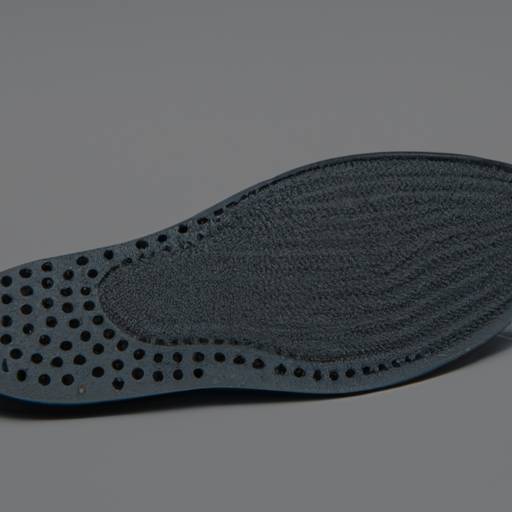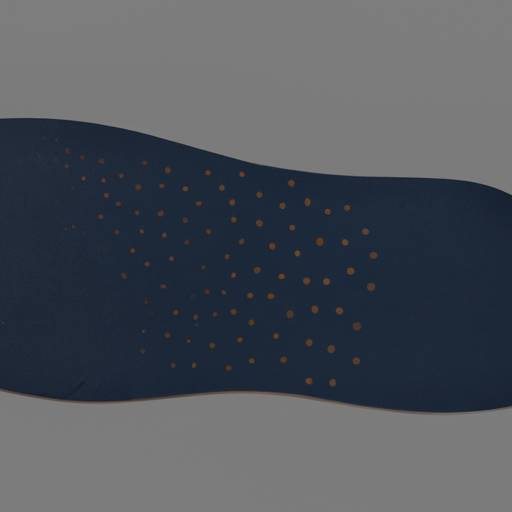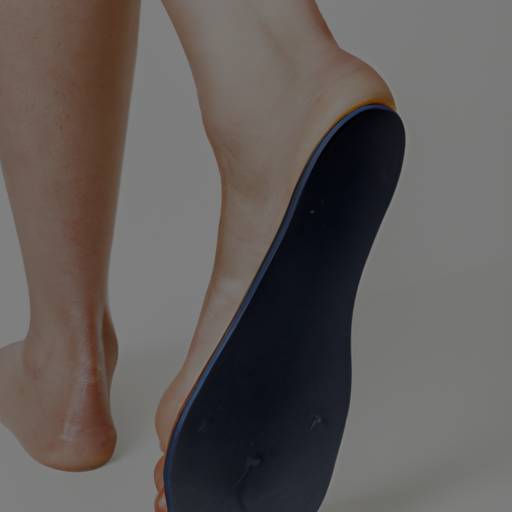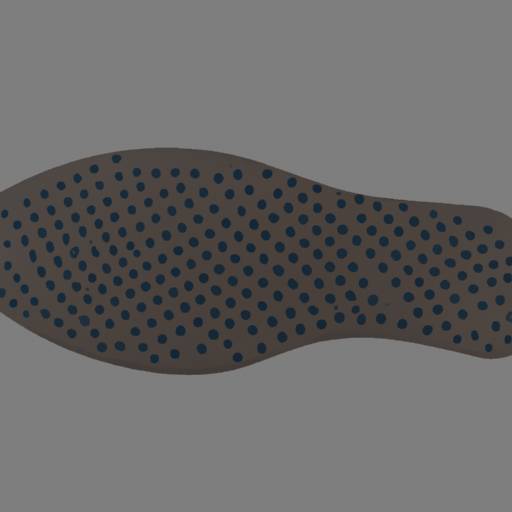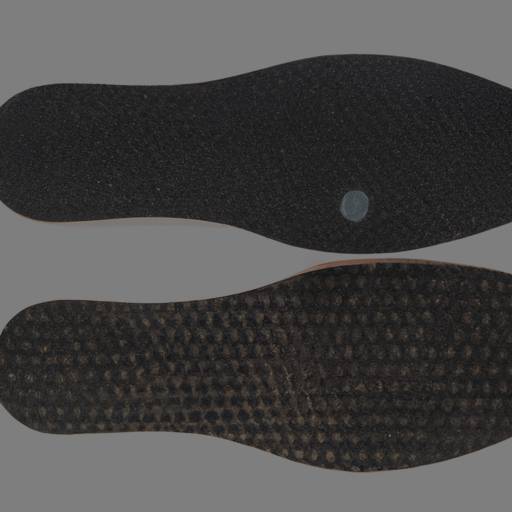Do Custom Insoles Really Help? Find Out if They Provide Arch Support
The Importance of Arch Support
Understanding the Role of Arch Support
Arch support plays a crucial role in maintaining the overall health and comfort of our feet. The arches of our feet act as natural shock absorbers, distributing the weight and pressure evenly as we walk, run, or stand. Arch support helps to maintain the proper alignment of the foot, preventing excessive strain on the muscles, ligaments, and tendons.
When the arches are not properly supported, it can lead to various foot problems and discomfort. Flat feet or overpronation are common issues where the arches collapse or excessively flatten when weight is placed on the foot. On the other hand, high arches or underpronation occur when the arches are too rigid and fail to provide adequate shock absorption.
Common Issues with Lack of Arch Support
Lack of proper arch support can result in a range of problems, including:
- Foot Pain: Without sufficient support, the feet can experience pain and discomfort, especially in the arch area. This can impact daily activities and overall mobility.
- Plantar Fasciitis: Insufficient arch support can contribute to the development of plantar fasciitis, a condition characterized by inflammation of the plantar fascia, a band of tissue that connects the heel to the toes. This can cause heel pain and stiffness.
- Flat Feet: Inadequate arch support can lead to the development or exacerbation of flat feet, where the arches collapse, causing the entire foot to come into contact with the ground. This can result in foot and ankle instability.
- Shin Splints: Insufficient arch support can contribute to the development of shin splints, a painful condition characterized by inflammation of the muscles and tendons surrounding the shinbone. This is often experienced by athletes or individuals engaging in high-impact activities.
- Knee, Hip, and Back Pain: When the arches are not properly supported, it can lead to misalignment of the lower limbs, affecting the alignment of the knees, hips, and even the spine. This can result in pain and discomfort in these areas.
By understanding the importance of arch support and the potential issues associated with its absence, individuals can take steps to address the issue and find appropriate solutions. In the next sections, we will explore different types of insoles, including custom insoles, which can provide the necessary arch support for optimal foot health.
Types of Insoles
When it comes to providing arch support, there are different types of insoles available in the market. These insoles aim to alleviate discomfort and provide enhanced stability for individuals with various foot conditions, including those with curved arches. Let’s explore the three main types of insoles: off-the-shelf insoles, custom insoles, and memory foam insoles.
Off-the-Shelf Insoles
Off-the-shelf insoles, also known as pre-made or over-the-counter insoles, are readily available in stores and online. These insoles are designed to offer arch support and accommodate various foot shapes and sizes. Off-the-shelf insoles are typically made from materials such as foam, gel, or a combination of both.
While off-the-shelf insoles can provide some level of arch support, they may not offer the same level of customization as custom insoles. However, they can be a cost-effective option for individuals who require mild to moderate arch support without specific foot conditions.
Custom Insoles
Custom insoles, as the name suggests, are specially tailored for an individual’s unique foot shape and arch structure. To obtain custom insoles, a healthcare professional, such as a podiatrist or orthopedic specialist, will assess your feet and create a mold or digital scan. This information is then used to create insoles that provide precise arch support.
Custom insoles offer a higher level of customization and support compared to off-the-shelf insoles. They are often recommended for individuals with specific foot conditions or those who require more significant arch support. Custom insoles can help improve foot alignment, reduce pain, and enhance overall foot function.
Memory Foam Insoles
Memory foam insoles are a type of insole that molds to the contours of your feet, providing customized support and cushioning. These insoles are made from a viscoelastic material that responds to body heat and pressure, allowing them to conform to the unique shape of your feet over time.
Memory foam insoles offer a combination of comfort and support. They provide a plush cushioning effect and help distribute pressure evenly across the foot, reducing discomfort and fatigue. However, it’s important to note that memory foam insoles may not provide the same level of customized arch support as custom insoles.
When selecting the right type of insole for your needs, consider factors such as the severity of your arch issues, foot conditions, and budget. Consulting a healthcare professional, such as a podiatrist or foot specialist, can help guide you in choosing the most suitable option for your specific foot type and arch support requirements.
Do Custom Insoles Really Help?
When it comes to finding the right support for your feet, custom insoles are often recommended as a solution. But do they really help? Let’s take a look at some of the benefits of custom insoles and the factors to consider when deciding whether they are right for you.
Benefits of Custom Insoles
Custom insoles are specially designed to provide personalized support and alignment for your feet. Unlike off-the-shelf insoles that offer a one-size-fits-all approach, custom insoles are tailored to your unique foot shape and arch type. This personalized fit can offer several benefits:
- Improved Arch Support: Custom insoles are crafted to provide optimal arch support, which can help alleviate discomfort and pain associated with arch-related issues such as plantar fasciitis or flat feet.
- Enhanced Foot Alignment: By realigning the foot to its natural position, custom insoles can help improve overall foot mechanics and reduce strain on the muscles and joints. This can have a positive impact on issues like knee pain and lower back pain.
- Enhanced Comfort: Custom insoles are designed to fit your feet perfectly, offering a higher level of comfort compared to generic insoles. The customized fit can help alleviate pressure points and provide cushioning where it’s needed most.
- Optimized Performance: Whether you’re an athlete or someone who spends long hours on their feet, custom insoles can enhance your performance by providing stability, shock absorption, and improved energy transfer.
Factors to Consider
While custom insoles offer numerous benefits, it’s important to consider a few factors before investing in them:
- Cost: Custom insoles can be more expensive than off-the-shelf options. However, they are often covered by insurance or health savings accounts, so it’s worth checking with your provider.
- Professional Assessment: To ensure the best fit and effectiveness, custom insoles usually require professional assessment by a podiatrist or foot specialist. This involves analyzing your foot structure, gait, and any specific foot conditions you may have.
- Break-in Period: Custom insoles may require a break-in period as your feet adjust to the new support and alignment. It’s important to follow any instructions provided by the professional who fitted you with the insoles.
- Maintenance and Replacement: Custom insoles, like any other footwear accessory, require regular maintenance and eventual replacement. It’s important to follow care instructions and monitor the condition of your insoles to ensure optimal support.
Before making a decision, it’s advisable to consult with a podiatrist or foot specialist who can assess your specific needs and guide you in selecting the best options for your feet. They can provide expert advice on whether custom insoles are the right choice for addressing your foot concerns.
While custom insoles can offer significant benefits, it’s important to remember that every individual’s needs are unique. Exploring the range of insole options available and seeking professional guidance can help you make an informed decision when considering custom insoles.
The Science Behind Arch Support
Understanding how arch support works and its effects on foot mechanics can provide valuable insight into the benefits of using insoles for arch support.
How Arch Support Works
Arch support refers to the additional support provided to the arch of the foot, which is the curved area between the ball of the foot and the heel. The arch of the foot acts as a natural shock absorber, helping to distribute the body’s weight evenly and maintain proper alignment during walking and other weight-bearing activities.
When the arch of the foot lacks proper support, it can lead to various issues such as overpronation (excessive inward rolling of the foot) or supination (insufficient inward rolling). These imbalances can put stress on different parts of the foot and lead to discomfort, pain, and a higher risk of injuries.
Arch support insoles are designed to address these imbalances and provide added support to the arch. They typically feature a contoured shape that mimics the natural arch of the foot, providing stability and redistributing pressure evenly. By supporting the arch, these insoles help to promote proper foot alignment and reduce stress on the muscles, tendons, and ligaments of the foot and lower leg.
Effects on Foot Mechanics
The use of arch support insoles can have several positive effects on foot mechanics. Here are some key benefits:
- Improved Stability: Arch support insoles help to stabilize the foot during movement, reducing excessive rolling and enhancing overall balance. This can be particularly beneficial for individuals with flat feet or high arches, as these foot types are more prone to imbalances and instability.
- Reduced Pain and Discomfort: By providing proper support to the arch, insoles can help alleviate pain and discomfort associated with conditions such as plantar fasciitis, arch strain, and flat feet. The additional cushioning and support can also help to reduce pressure on sensitive areas, such as the heel or the ball of the foot.
- Enhanced Shock Absorption: The arch support provided by insoles helps to improve the foot’s ability to absorb shock during activities like walking, running, or jumping. This can help reduce the impact forces transmitted through the foot and lower leg, potentially preventing injuries and reducing fatigue.
- Improved Alignment: Arch support insoles promote proper foot alignment, which in turn can positively impact the alignment of the entire body. By supporting the arch and correcting imbalances, these insoles can help improve posture and reduce strain on the ankles, knees, hips, and lower back.
It’s important to note that the effectiveness of arch support insoles may vary depending on individual foot characteristics and specific needs. Consulting a podiatrist or foot specialist can help in determining the most suitable type of insoles for your feet. For those looking for insoles with memory foam, our article on memory foam insoles provides more information on this specific type of insole.
By understanding the science behind arch support and its impact on foot mechanics, individuals can make informed decisions when selecting insoles to provide the necessary support and alleviate foot-related issues. Remember, finding the right insoles for your needs often requires assessing your arch type, seeking professional advice, and trying different options to determine their effectiveness.
Finding the Right Insoles for Your Needs
When it comes to choosing the right insoles for your needs, there are a few important factors to consider. Assessing your arch type, consulting a podiatrist or foot specialist, and trying different insoles to determine their effectiveness are key steps in finding the most suitable option.
Assessing Your Arch Type
Before selecting insoles, it’s essential to assess your arch type. There are three main types of arches: low arches (flat feet), normal arches, and high arches. Understanding your arch type can help you determine the level of support your feet require. You can refer to our article on flat foot custom insoles for more information on flat feet and suitable insole options.
Consulting a Podiatrist or Foot Specialist
If you’re unsure about your arch type or experiencing foot pain, it’s advisable to consult a podiatrist or foot specialist. These professionals can assess your feet, analyze your gait, and provide personalized recommendations for the best insoles based on your specific needs. Their expertise can help ensure that you choose the right insoles to support your feet and address any underlying foot issues. Additionally, they can offer guidance on other foot care practices and recommend suitable shoe brands. Learn more about the best shoe brands recommended by podiatrists in our related article.
Trying Different Insoles to Determine Effectiveness
Once you have assessed your arch type and received professional guidance, it’s time to try different insoles to determine their effectiveness. Remember that everyone’s feet are unique, and what works for one person may not work for another. It may be necessary to experiment with different materials, designs, and levels of support to find the insoles that provide the most comfort and relief for your feet.
When trying different insoles, pay attention to how they feel during different activities such as walking, running, or standing for extended periods. Consider factors like cushioning, arch support, and overall comfort. It’s also worth noting any changes in pain or discomfort levels when using specific insoles. Keep in mind that it may take some time for your feet to adjust to the new support, so give yourself a chance to adapt before making a final judgment.
By assessing your arch type, seeking professional advice, and trying different insoles, you can increase the likelihood of finding the right insoles that provide the necessary support for your feet. Remember that each person’s needs may vary, so it’s important to listen to your body and prioritize comfort.

